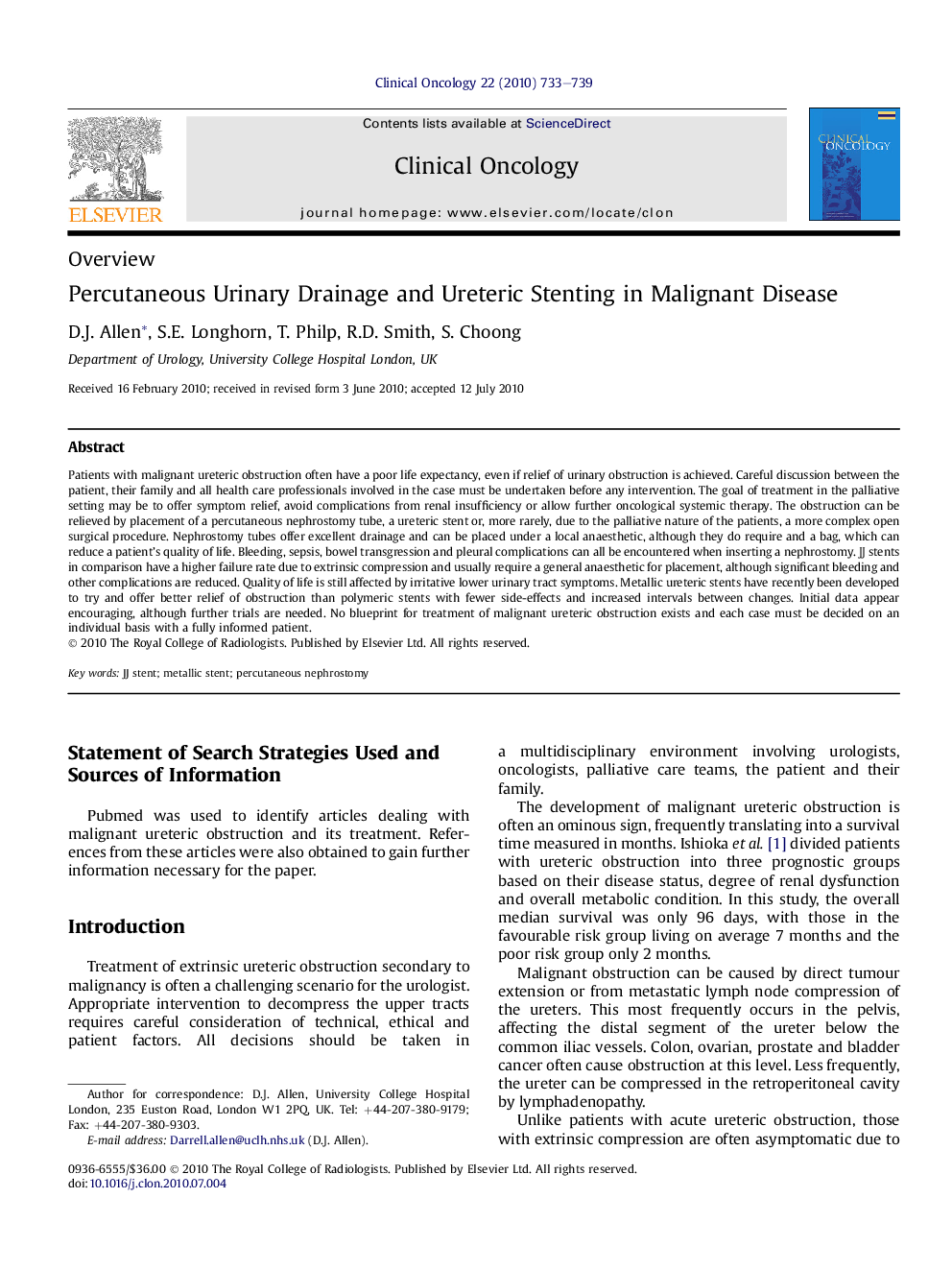| Article ID | Journal | Published Year | Pages | File Type |
|---|---|---|---|---|
| 5700098 | Clinical Oncology | 2010 | 7 Pages |
Abstract
Patients with malignant ureteric obstruction often have a poor life expectancy, even if relief of urinary obstruction is achieved. Careful discussion between the patient, their family and all health care professionals involved in the case must be undertaken before any intervention. The goal of treatment in the palliative setting may be to offer symptom relief, avoid complications from renal insufficiency or allow further oncological systemic therapy. The obstruction can be relieved by placement of a percutaneous nephrostomy tube, a ureteric stent or, more rarely, due to the palliative nature of the patients, a more complex open surgical procedure. Nephrostomy tubes offer excellent drainage and can be placed under a local anaesthetic, although they do require and a bag, which can reduce a patient's quality of life. Bleeding, sepsis, bowel transgression and pleural complications can all be encountered when inserting a nephrostomy. JJ stents in comparison have a higher failure rate due to extrinsic compression and usually require a general anaesthetic for placement, although significant bleeding and other complications are reduced. Quality of life is still affected by irritative lower urinary tract symptoms. Metallic ureteric stents have recently been developed to try and offer better relief of obstruction than polymeric stents with fewer side-effects and increased intervals between changes. Initial data appear encouraging, although further trials are needed. No blueprint for treatment of malignant ureteric obstruction exists and each case must be decided on an individual basis with a fully informed patient.
Related Topics
Health Sciences
Medicine and Dentistry
Oncology
Authors
D.J. Allen, S.E. Longhorn, T. Philp, R.D. Smith, S. Choong,
